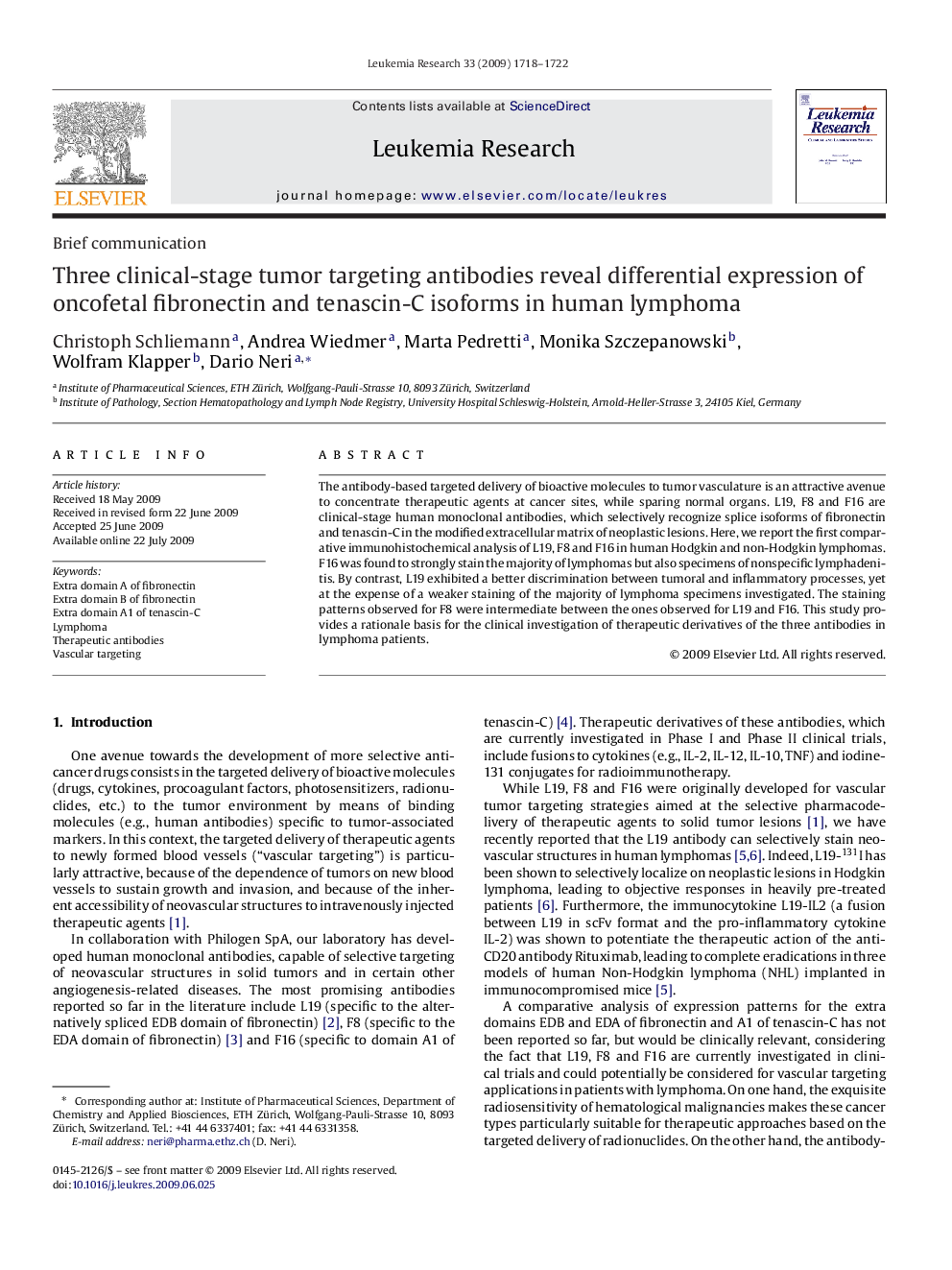| Article ID | Journal | Published Year | Pages | File Type |
|---|---|---|---|---|
| 2138433 | Leukemia Research | 2009 | 5 Pages |
Abstract
The antibody-based targeted delivery of bioactive molecules to tumor vasculature is an attractive avenue to concentrate therapeutic agents at cancer sites, while sparing normal organs. L19, F8 and F16 are clinical-stage human monoclonal antibodies, which selectively recognize splice isoforms of fibronectin and tenascin-C in the modified extracellular matrix of neoplastic lesions. Here, we report the first comparative immunohistochemical analysis of L19, F8 and F16 in human Hodgkin and non-Hodgkin lymphomas. F16 was found to strongly stain the majority of lymphomas but also specimens of nonspecific lymphadenitis. By contrast, L19 exhibited a better discrimination between tumoral and inflammatory processes, yet at the expense of a weaker staining of the majority of lymphoma specimens investigated. The staining patterns observed for F8 were intermediate between the ones observed for L19 and F16. This study provides a rationale basis for the clinical investigation of therapeutic derivatives of the three antibodies in lymphoma patients.
Related Topics
Life Sciences
Biochemistry, Genetics and Molecular Biology
Cancer Research
Authors
Christoph Schliemann, Andrea Wiedmer, Marta Pedretti, Monika Szczepanowski, Wolfram Klapper, Dario Neri,
